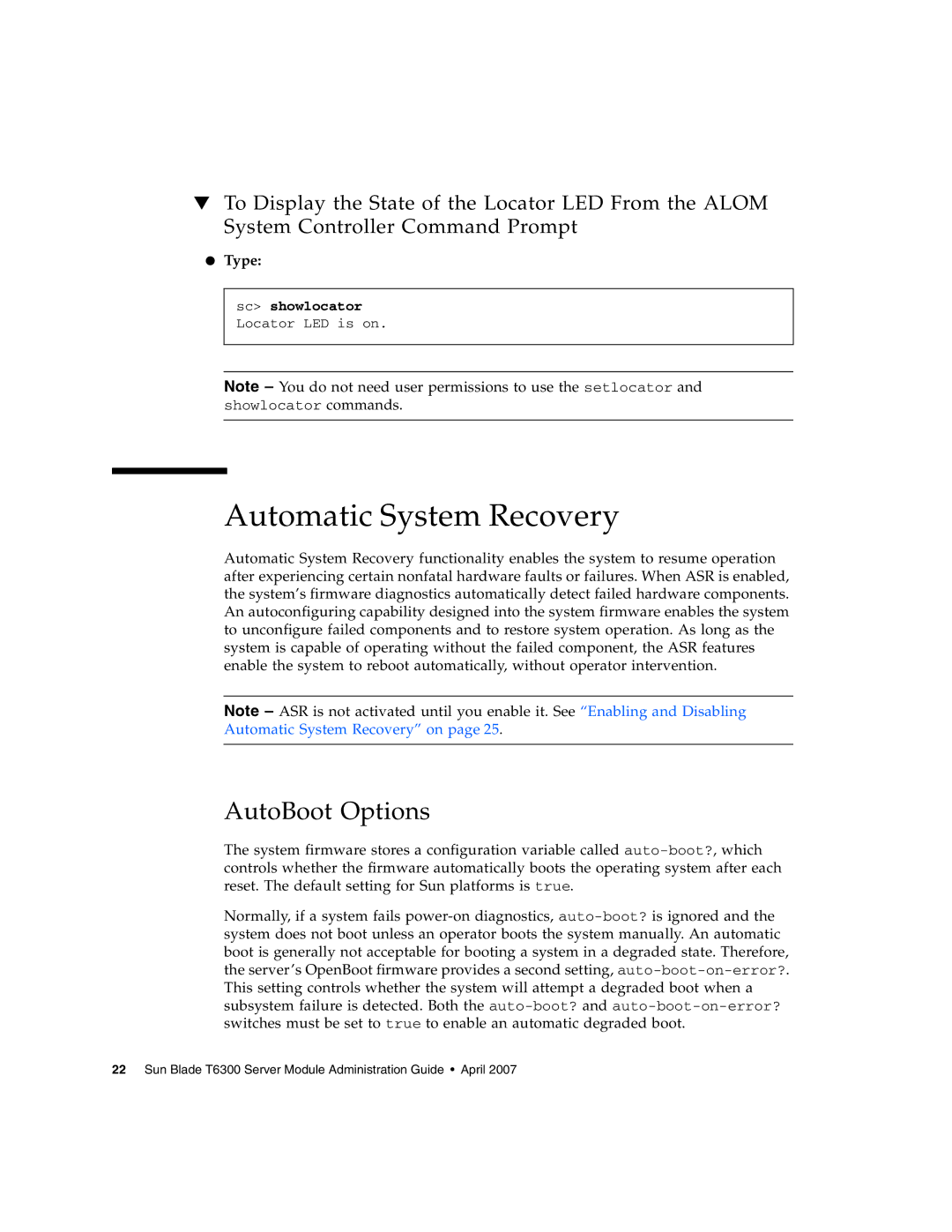
▼To Display the State of the Locator LED From the ALOM System Controller Command Prompt
●Type:
sc> showlocator
Locator LED is on.
Note – You do not need user permissions to use the setlocator and showlocator commands.
Automatic System Recovery
Automatic System Recovery functionality enables the system to resume operation after experiencing certain nonfatal hardware faults or failures. When ASR is enabled, the system’s firmware diagnostics automatically detect failed hardware components. An autoconfiguring capability designed into the system firmware enables the system to unconfigure failed components and to restore system operation. As long as the system is capable of operating without the failed component, the ASR features enable the system to reboot automatically, without operator intervention.
Note – ASR is not activated until you enable it. See “Enabling and Disabling Automatic System Recovery” on page 25.
AutoBoot Options
The system firmware stores a configuration variable called
Normally, if a system fails
